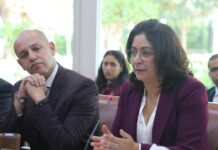In 2024 and according to Haut Commissariat au Plan (HCP), Morocco’s housing landscape reveals noticeable shifts both in urban and rural areas, underscoring modernization, improved infrastructure, and changing living conditions across the country. In urban areas, the majority of households, about 65.4%, live in modern Moroccan houses, a structure unique to Morocco and distinct from apartments, villas, or traditional homes. Apartments have gained ground, now representing 24.4% of urban dwellings, compared to only 17.5% in 2014. Traditional Moroccan houses have seen a decline, dropping to just 2.6%, while villas account for 2.7%, also down from 4.5% a decade earlier. One of the most significant changes is the decline in slum housing or makeshift dwellings, which fell to 3.3% in 2024 from 5.2% in 2014, reflecting improvements in urban planning and housing policies.
However, regional disparities persist when it comes to slum housing. The Casablanca-Settat region remains the most affected, with 7.6% of urban households still living in slums, followed by Fès-Meknès (2.9%) and Rabat-Salé-Kénitra (2.7%). By contrast, regions such as Guelmim-Oued Noun have made significant progress, with slum housing reduced to a mere 0.2%. These figures underscore how housing challenges are unevenly distributed across Morocco’s regions, with more urbanized areas often facing greater pressure.
In rural areas, a transformation is underway as the share of traditional rural housing, typically constructed of earth or stone, has dropped significantly. In 2014, 64.1% of rural households lived in this type of housing, but by 2024, the figure had fallen to 53.3%. This decline coincides with a surge in the popularity of modern Moroccan houses, which now make up 37.6% of rural homes, compared to just 25.9% a decade ago. This trend highlights a clear shift toward modernization in rural housing, influenced by economic growth, improved infrastructure, and changing aspirations among rural populations.
At the same time, urban households are increasingly living in smaller spaces. The proportion of households occupying homes with just one or two rooms has grown substantially, rising from 35.7% in 2014 to 43.5% in 2024. In contrast, those living in homes with three or more rooms have dropped from 64.3% to 56.5% over the same period. This trend is most pronounced in regions such as Dakhla-Oued Ed-Dahab, where only 36.9% of households occupy larger homes, and Tangier-Tetouan-Al Hoceima, with 48.3%. On the other hand, regions like Drâa-Tafilalet and Guelmim-Oued Noun continue to offer more spacious housing, with over 63% of households occupying homes with three or more rooms.
Home ownership in urban areas has stagnated over the past decade, with 61.5% of households owning their homes in 2024 compared to 61.9% in 2014. Meanwhile, rental housing has slightly increased, now accounting for 28% of urban dwellings. The regions with the highest rates of home ownership include Casablanca-Settat, where 65.1% of households are homeowners, and the Oriental region, with 64.9%. In contrast, the southern regions lag far behind, particularly Dakhla-Oued Ed-Dahab, where only 30.2% of households own their homes, and Laâyoune-Sakia El Hamra, where the rate stands at 43.9%.
Morocco’s housing stock is also undergoing a process of rejuvenation. In 2024, 22% of households occupy homes that are less than ten years old, a slight increase from 20.1% in 2014. This trend is more pronounced in urban areas, where 23.8% of homes are under ten years old, compared to 18.3% in rural areas. The share of homes aged between 10 and 49 years has also increased, rising from 59.6% in 2014 to 64.7% in 2024, with urban areas seeing the most notable growth. Meanwhile, the proportion of older homes, aged 50 years or more, has dropped significantly, from 20.3% in 2014 to 13.3% in 2024. Urban areas have seen the steepest decline, with just 7.4% of homes now over 50 years old, down from 14.9% a decade ago. Regionally, newer homes are concentrated in Dakhla-Oued Ed-Dahab and Laâyoune-Sakia El Hamra, where over 30% of the housing stock is less than ten years old. In contrast, older homes are more prevalent in Marrakech-Safi, Béni Mellal-Khénifra, and Casablanca-Settat.
Moroccan households are also benefiting from better access to basic infrastructure. In 2024, 97.1% of households have access to electricity, up from 91.6% in 2014. Urban areas have almost universal coverage at 98.7%, while rural areas have seen a significant improvement, with access rising from 84.6% to 93.8%. The supply of drinking water has also expanded. In 2024, 82.9% of households are connected to the drinking water network, compared to just 73% in 2014. The most significant progress has occurred in rural areas, where access has jumped from 37.8% to 54.6%, although urban areas are nearing universal access, with 97.1% of households connected. However, some rural regions, such as Tangier-Tetouan-Al Hoceima and Rabat-Salé-Kénitra, still struggle with lower connection rates.
Access to sanitation has improved in urban areas, where 93.4% of households are now connected to sewer systems, up from 88.2% in 2014. The use of septic tanks in urban areas has declined from 9.6% to 4.6%, signaling better infrastructure. In rural areas, however, septic tanks and soak pits remain the primary means of wastewater management, with little change over the past decade.





